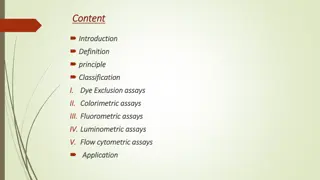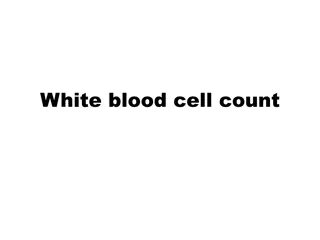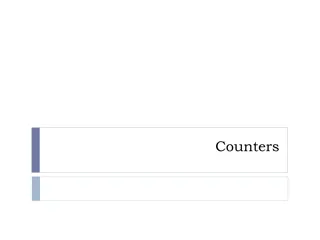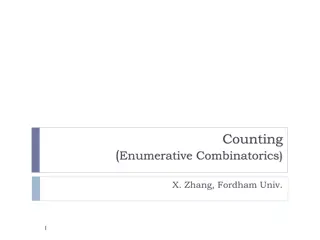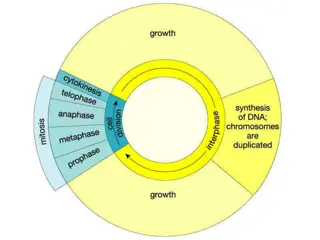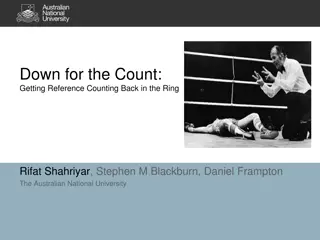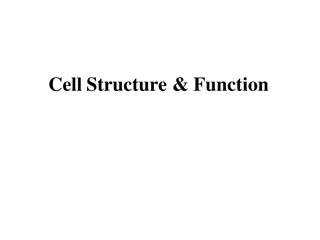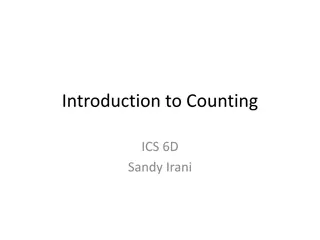Hemacytometer Cell Counting Procedure
The hemacytometer cell counting method is a valuable diagnostic tool for determining the number of cells in a given volume of fluid. This process involves using a counting chamber under a microscope to calculate the cells per unit volume. By following a systematic approach, including proper dilution and preparation techniques, accurate cell counts can be obtained for diagnostic purposes. The detailed steps outlined in the procedure ensure precision and reliability in cell counting for various applications.
Uploaded on Oct 07, 2024 | 0 Views
Download Presentation

Please find below an Image/Link to download the presentation.
The content on the website is provided AS IS for your information and personal use only. It may not be sold, licensed, or shared on other websites without obtaining consent from the author.If you encounter any issues during the download, it is possible that the publisher has removed the file from their server.
You are allowed to download the files provided on this website for personal or commercial use, subject to the condition that they are used lawfully. All files are the property of their respective owners.
The content on the website is provided AS IS for your information and personal use only. It may not be sold, licensed, or shared on other websites without obtaining consent from the author.
E N D
Presentation Transcript
GENERAL PRINCIPLE : The count of cells per volume unit is quite useful as diagnostic tool.. The only realistic alternative will be to use a counting chamber in which the cells are counted under the microscope . GENERAL PRINCIPLE :
Depending on the kind of liquid to be analysed (expected cell number), a dilution and/or destruction of undesirable cells must be done. A simple calculation taking in accounting and it will give the number of cells per mm mm .
Hemacytometer {the counting chamber}. Cover glass. RBCs pipette with hose and Mouthpiece {Thoma red count pipette}. Lancet needless (for drawing blood). Platforms (for drawing blood). Microscope. 70% ethanol. Bottle ringer's solution(a clear diluent for RBCs). Absorbent paper.
Set up all equipment on your desk so that you are sure to have everything at 1 1. Swab towards the side of the tip of a little-used finger with 70% Ethanol. 2 2. Lance by placing the platform of the auto let against the fingertip and pressing the trigger. 3 3. Using the dilution pipette with RED mixer from hemacytometer kit, draw blood up to the 0.5 mark (Do not allow air to be drawn into the pipette or it will not draw the correct volume of blood,Do not allow blood to congeal in pipette Immediately proceed to the next step:
4 4. Continuing to hold the pipette as horizontal as possible,draw Ringer's up to the 101 mark. (Dilution of 1 to 200.) 5 5. Seal the tip with your finger and shake well to mix. 6 6. Empty ~1/2 of pipette into waste container add a small amount of the diluted blood to one chamber of the hemacytometer to just fill the chamber of the hemacytometer. (Do not over fill). Ringer's solution solution diluent
7 7. Let the preparation sit for a minute (for cells to settle). 8 8. Center the grid at 100x,switch to 400x and count and record the RBCs in each of five fields(each with 16 smallest squares) .Include in the count all cells touching left and bottom sides,ignore cells touching top and right sides.Calculate the RBCs/ mm3by adding the cells in the 5 groups and multiplying by 10,000 RBCs/mm3. 9 9. Wash out the pipette thoroughly with soap and water, rinse well, finish with distilled H2O . 10,000 (i.e., add four zeros). (i.e., add four zeros).
Routinely, blood is drawn to the 0.5 mark and diluted to the 101 mark with RBC diluting fluid. All the blood is washed into the bulb of the pipette (which has a volume of 100). Therefore, 0.5 volumes of blood are contained in 100 volumes of diluting fluid. The resulting dilution is 1:200.
N N RBCs/mm RBCs/mm3 --------- x 400 x 200 x 10 80 N = numbers of RBCs counted in {80 small squares 80 = ( 5 x 16 ) small squares. 400 = ( 16 x 25 ) total squares. 200 = Dilution factor . 10 = depth of the chamber 3 = =--------- x 400 x 200 x 10 80 N = squares} . 80 = ( 5 x 16 ) small squares. 400 = ( 16 x 25 ) total squares. 200 = Dilution factor . 10 = depth of the chamber . . numbers of RBCs counted in {80 small } .
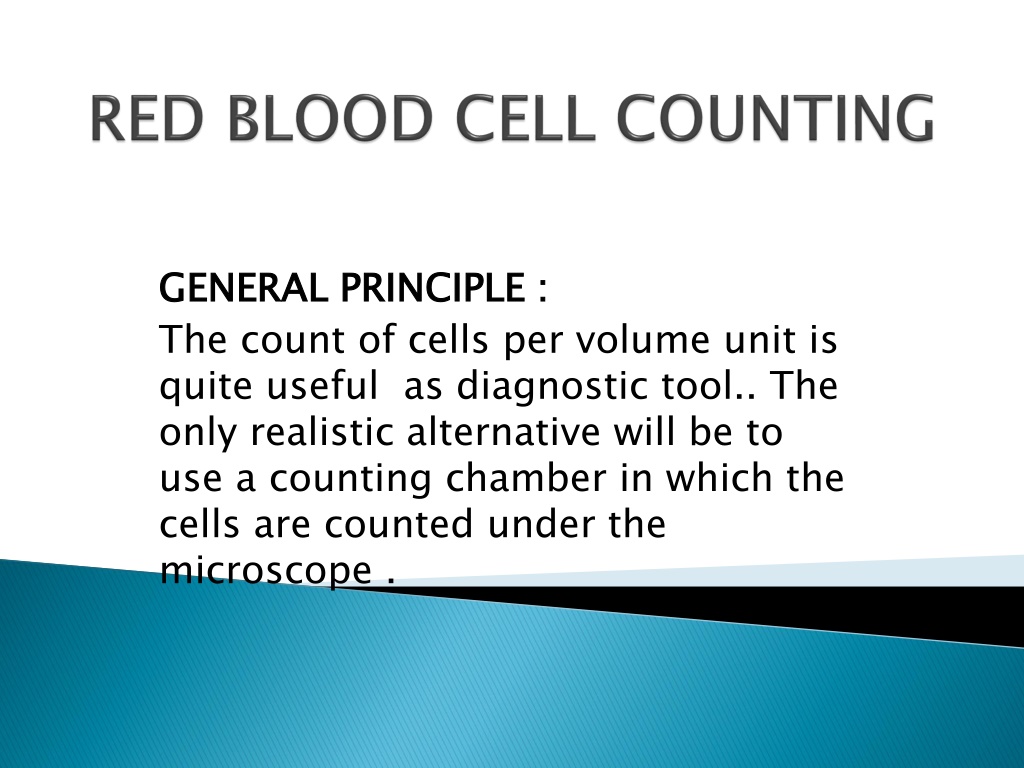
 undefined
undefined









